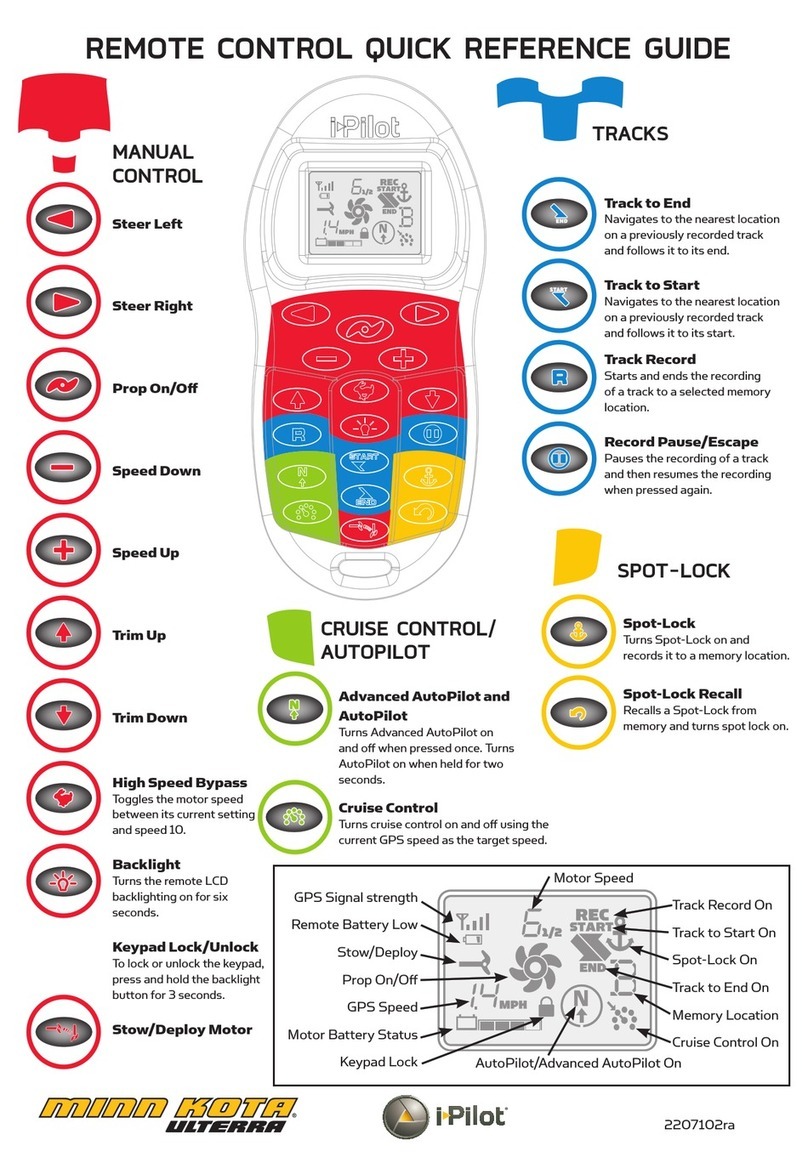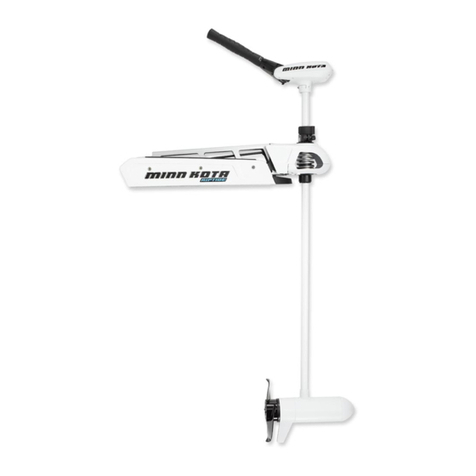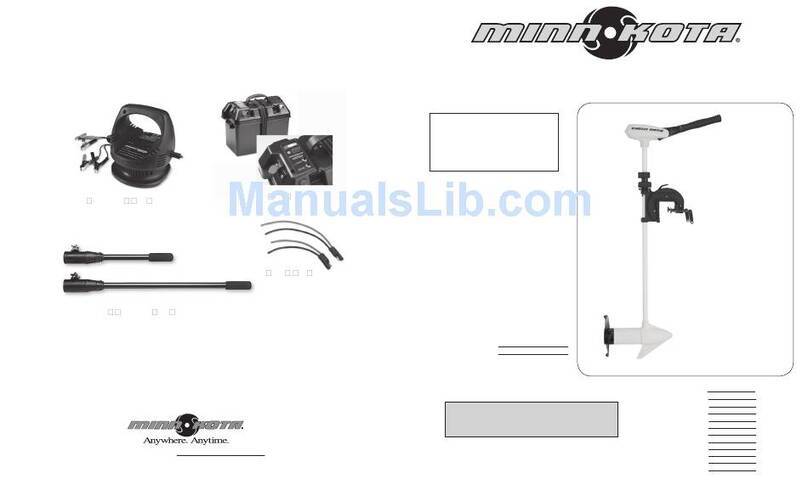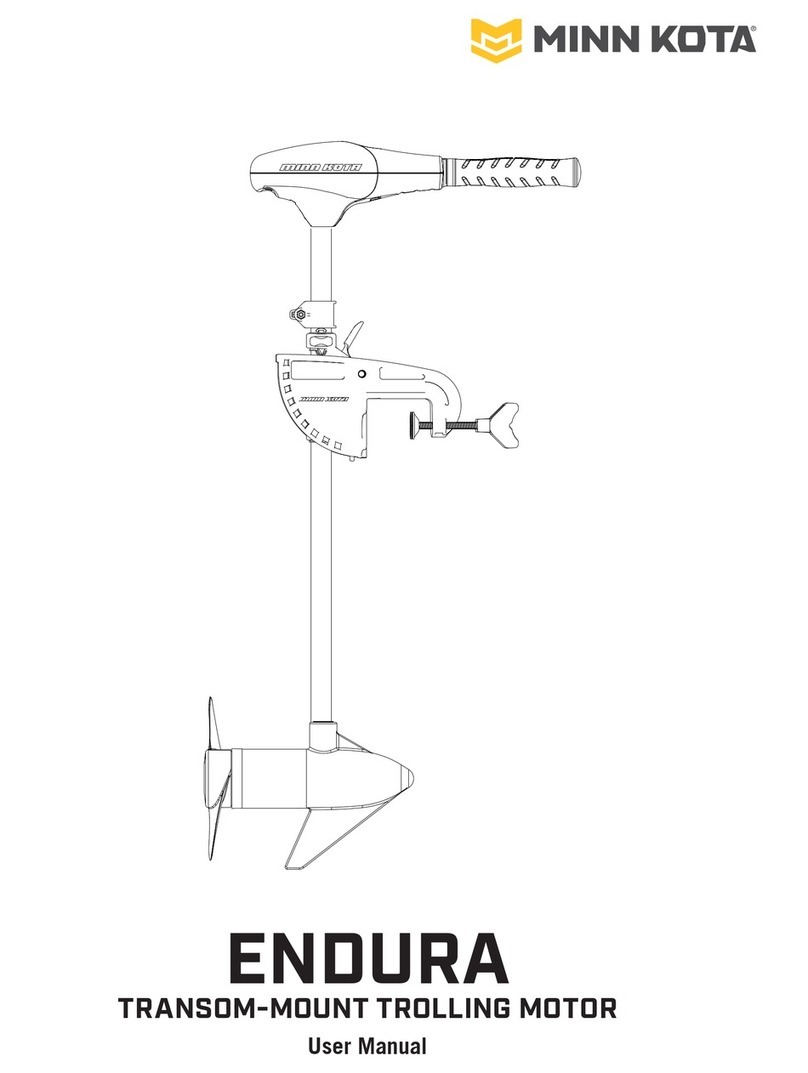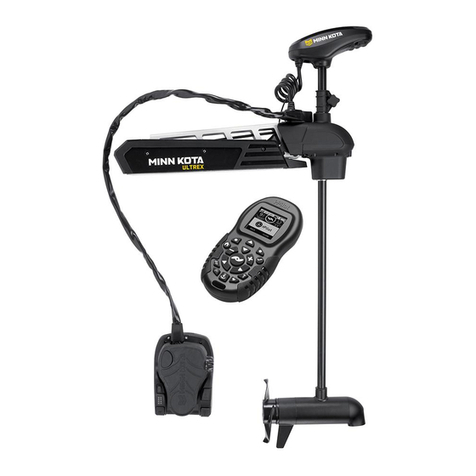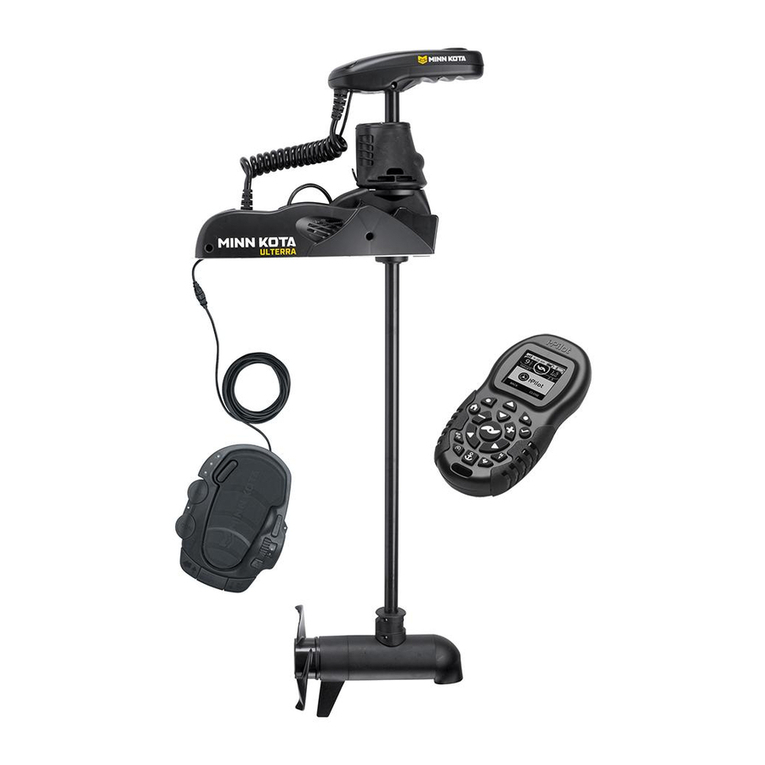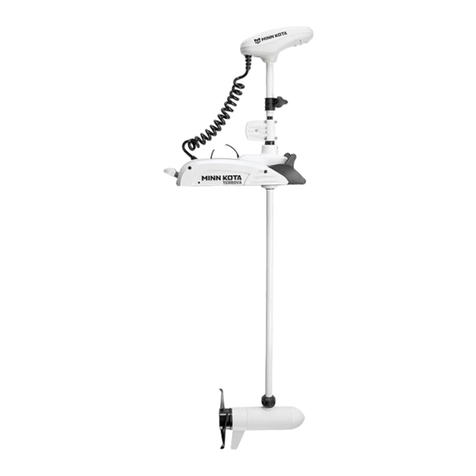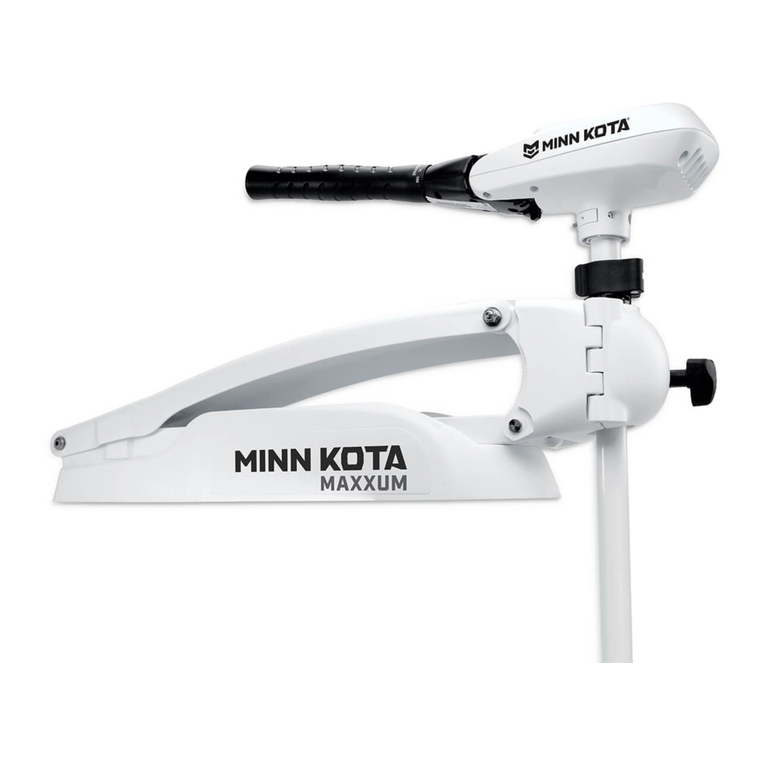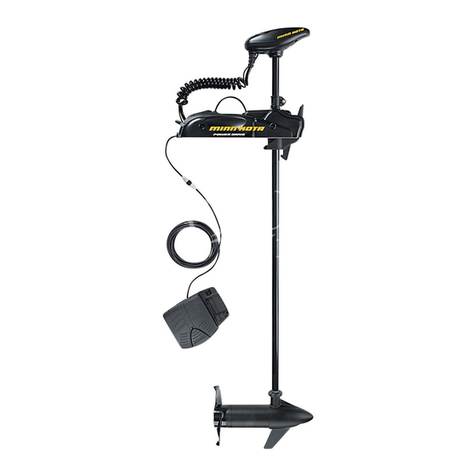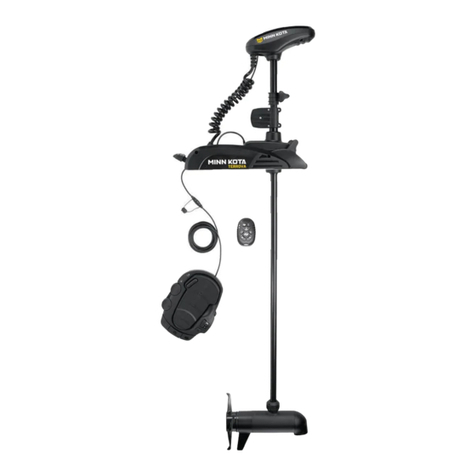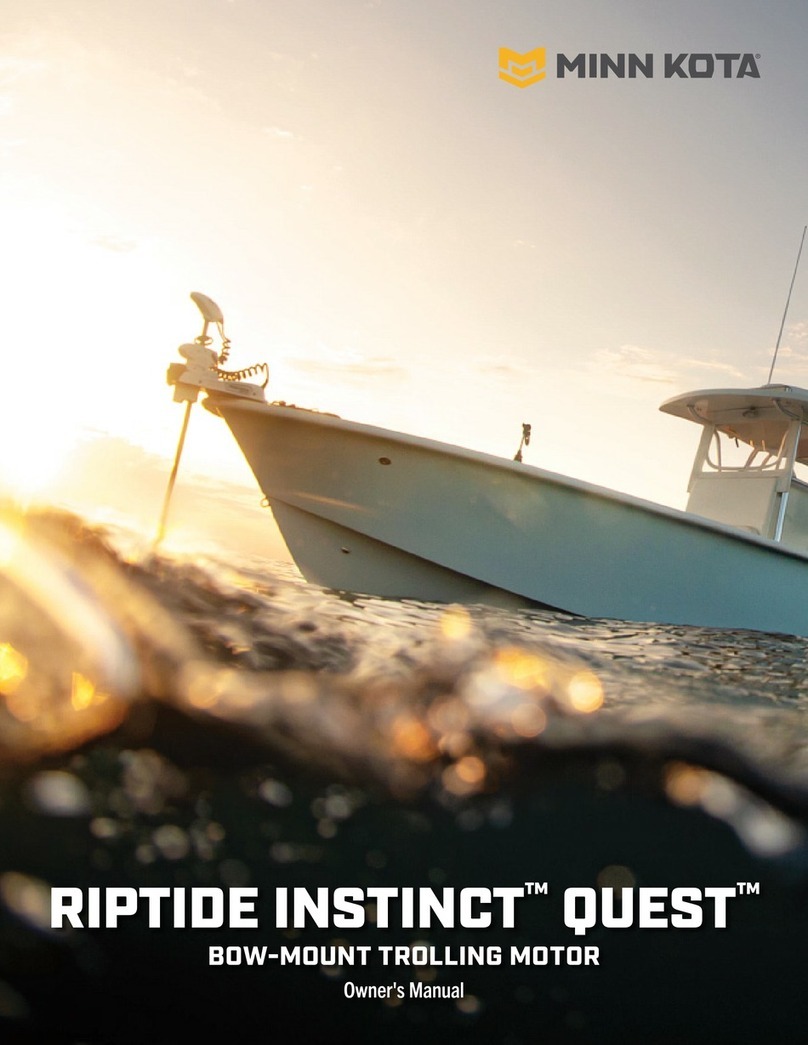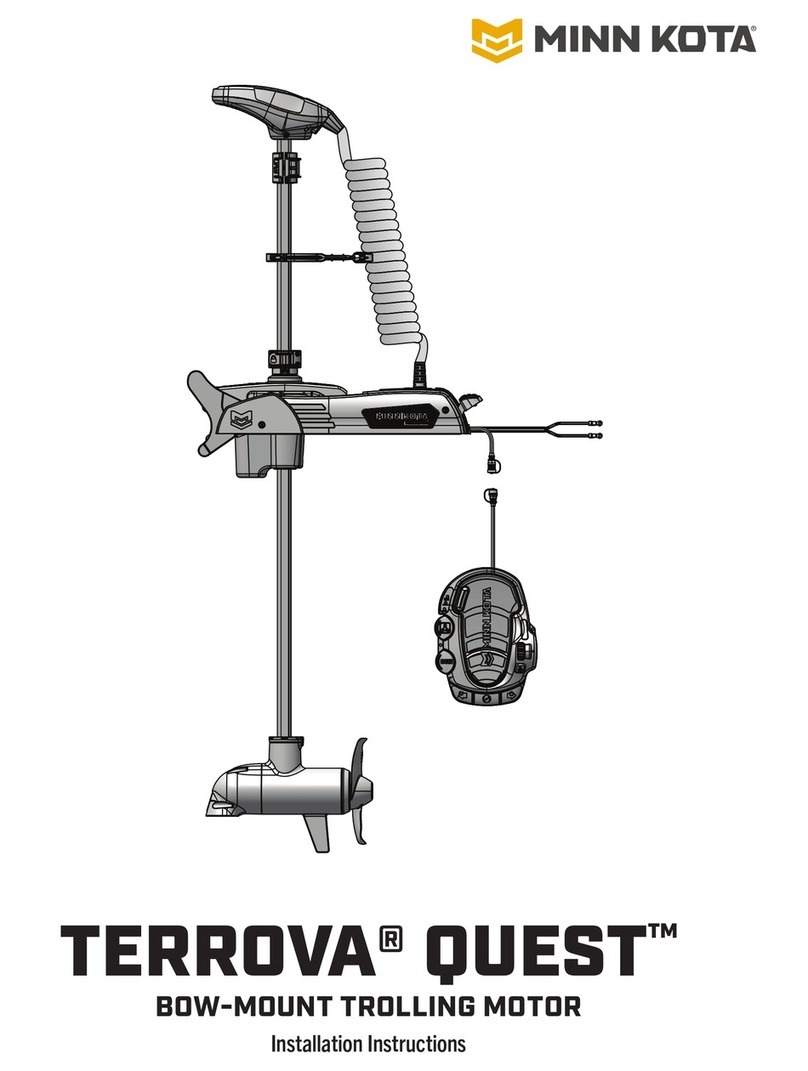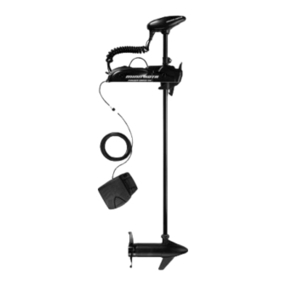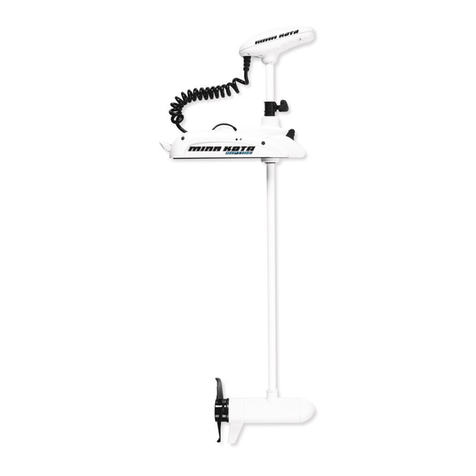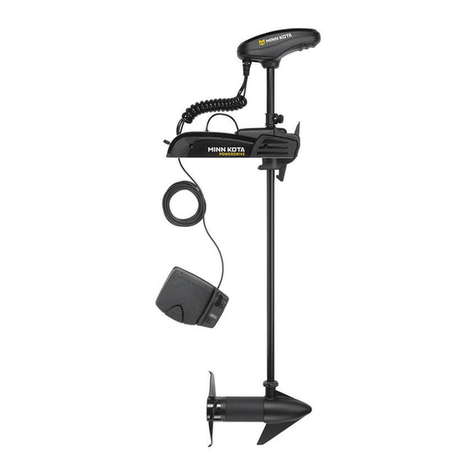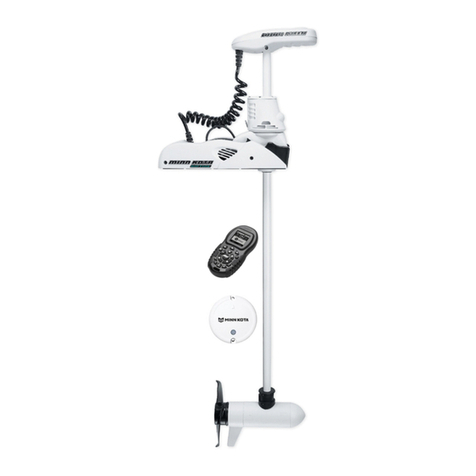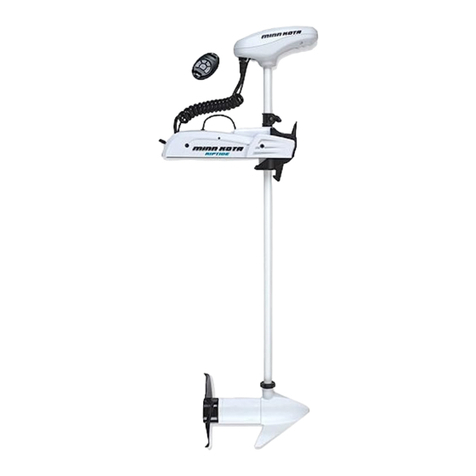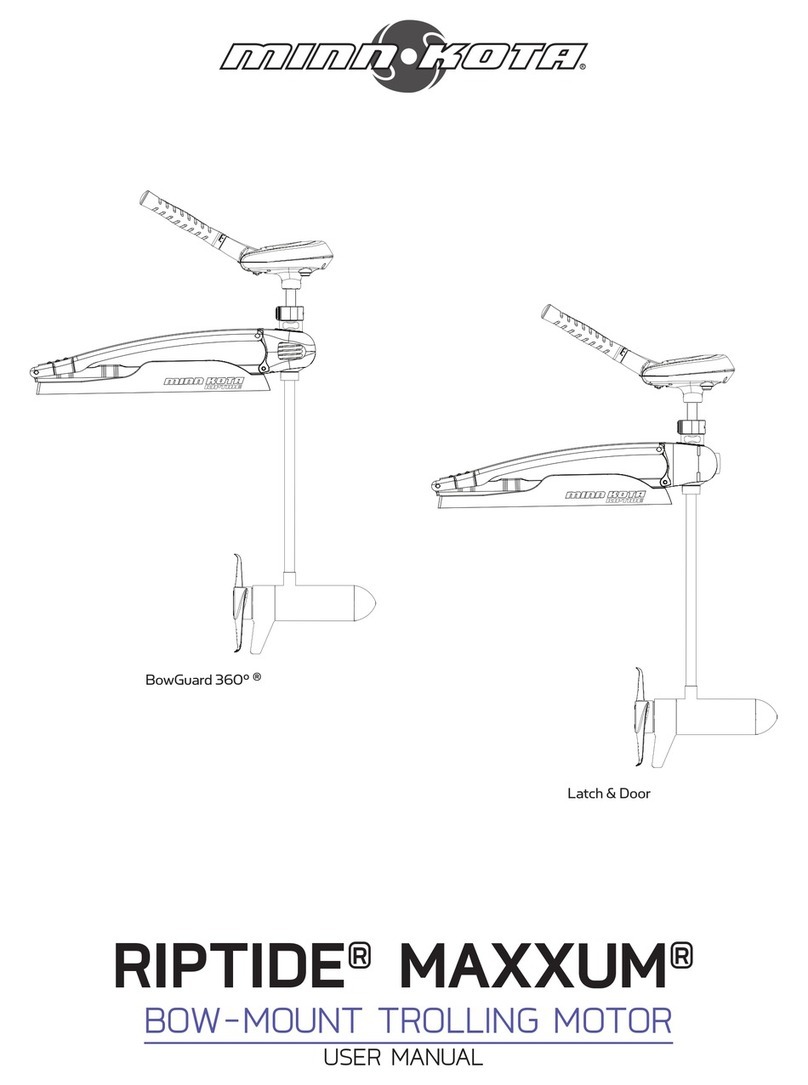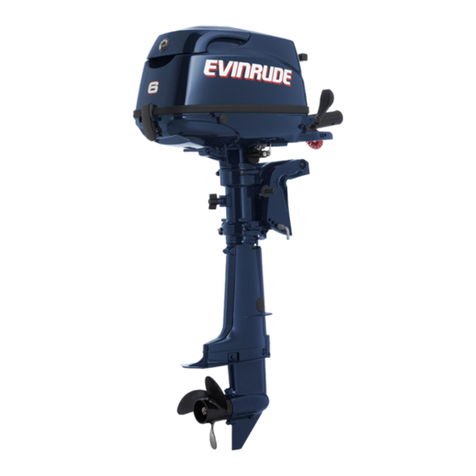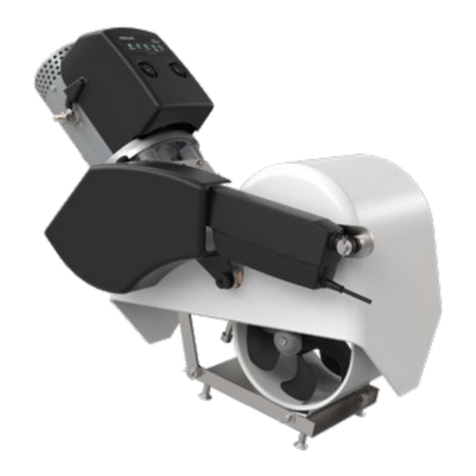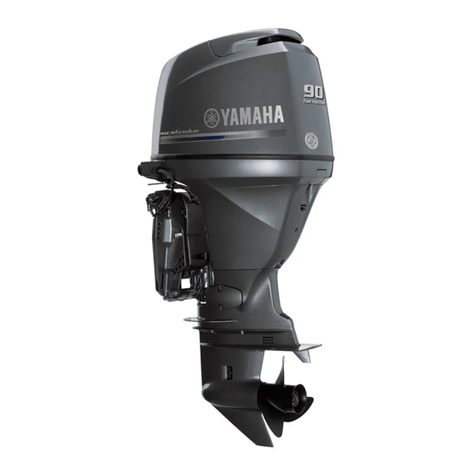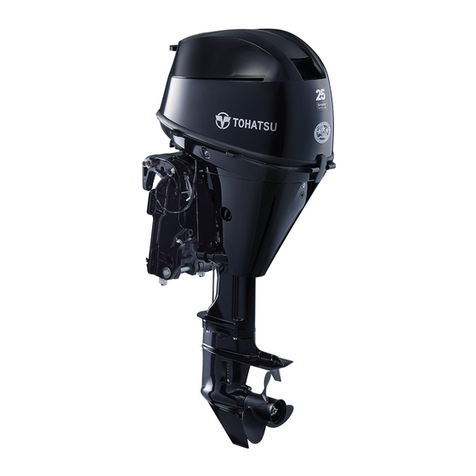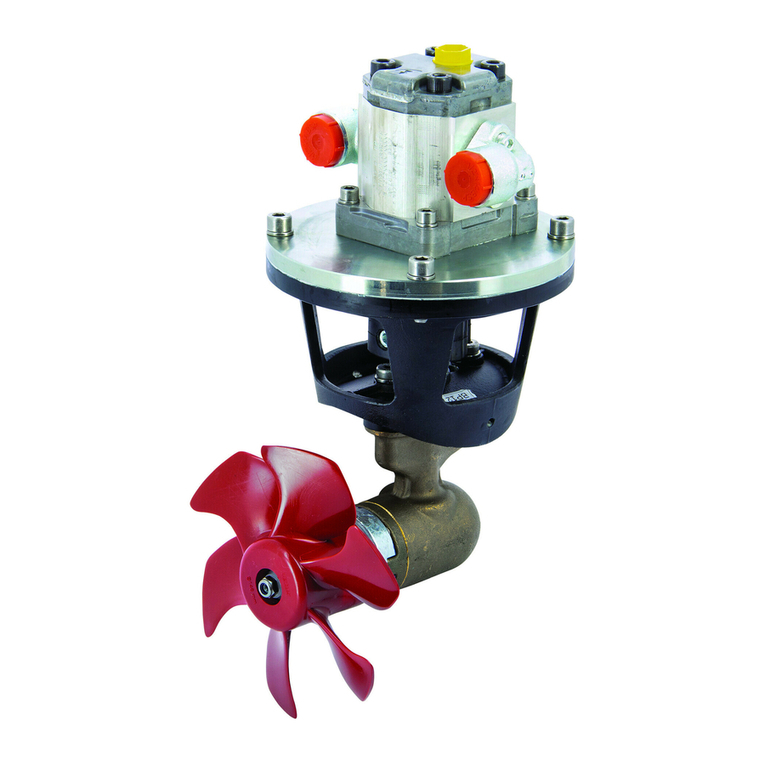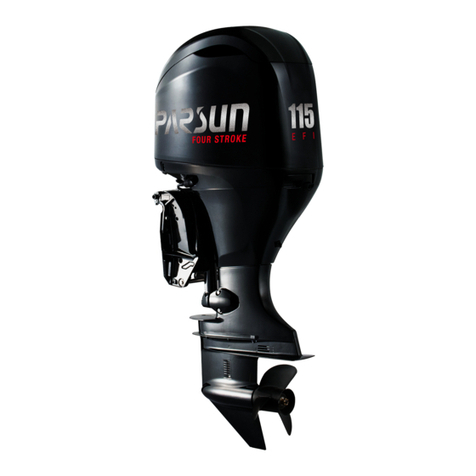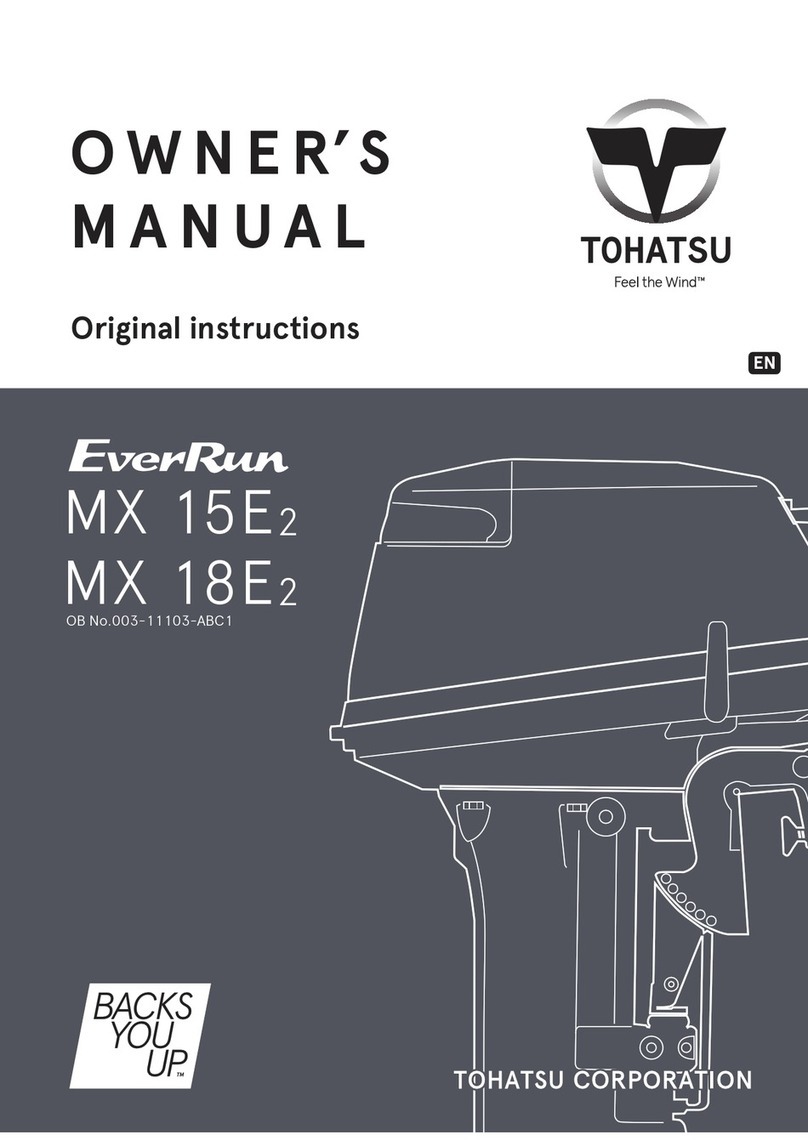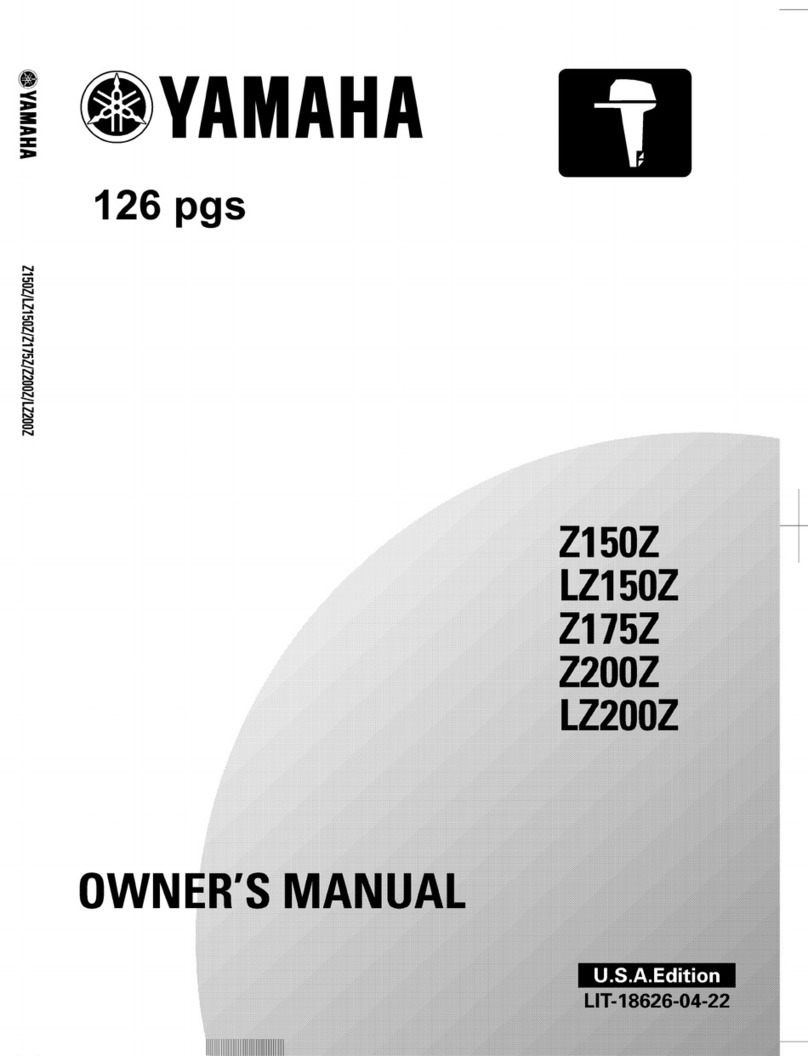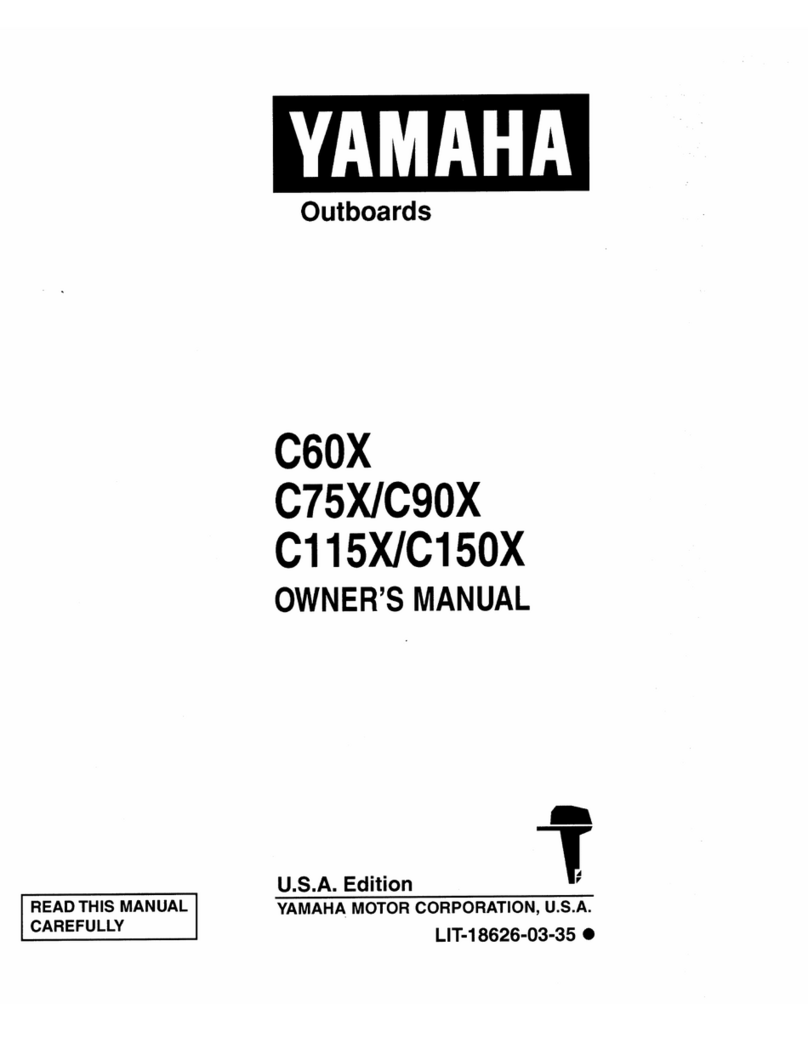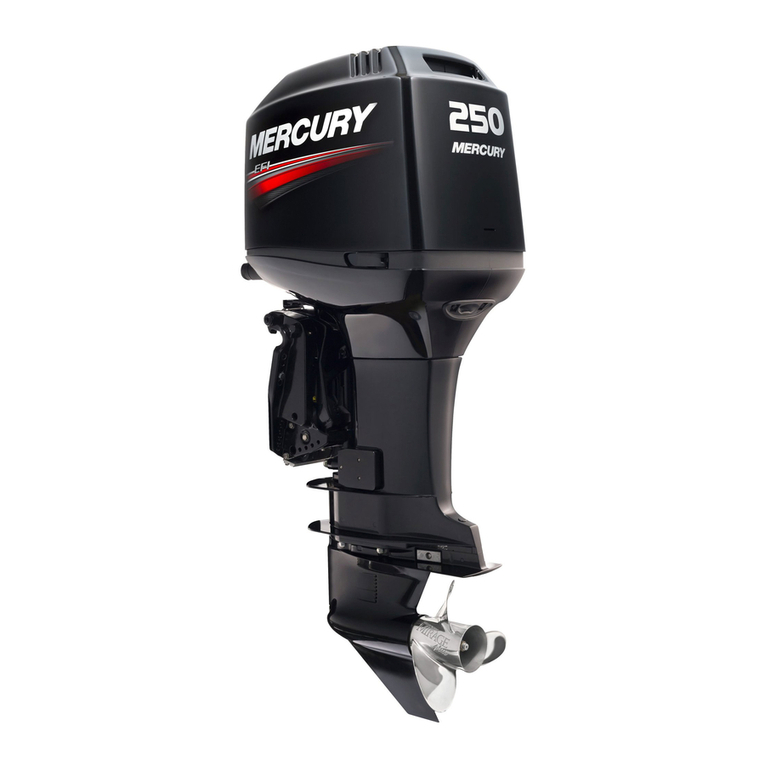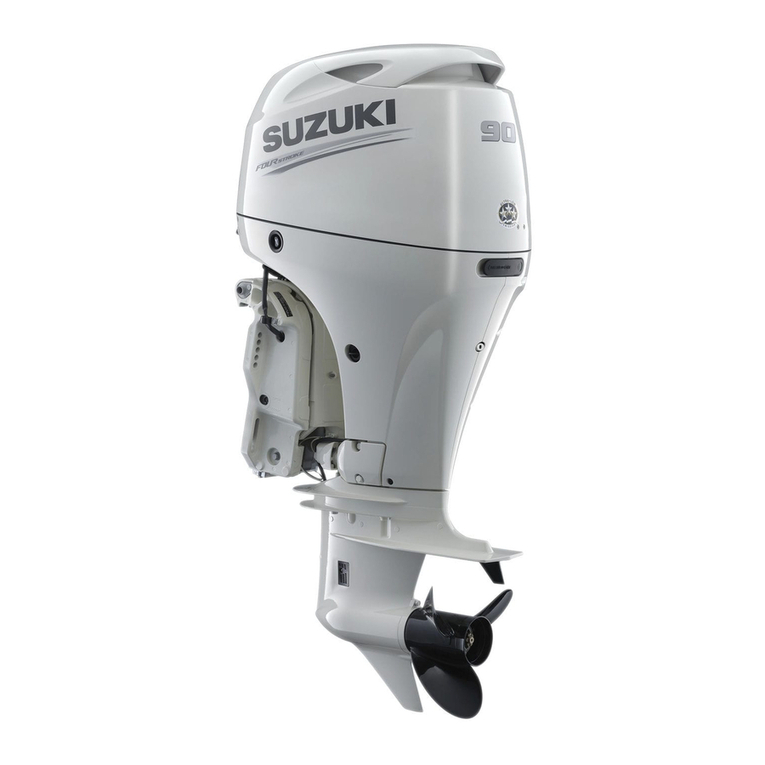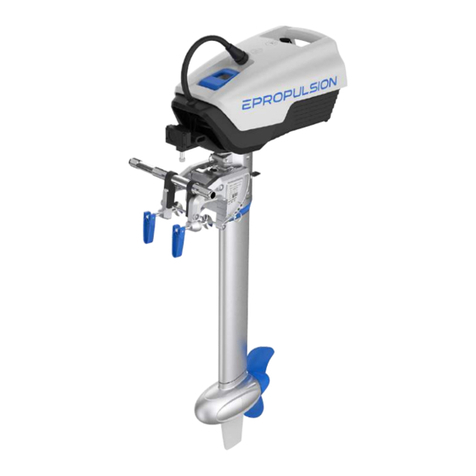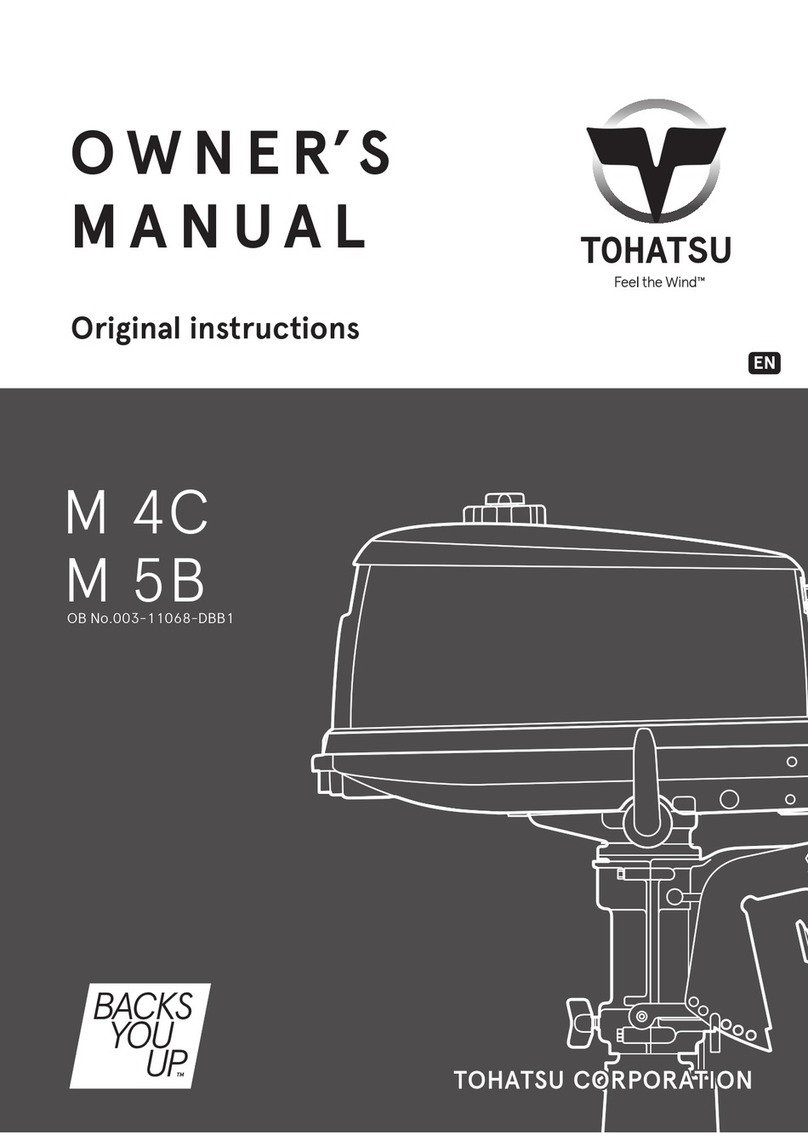BATTERY INFORMATION BATTERY CONNECTION
7
CAUTIONS CIRCUIT BREAKER
6
BATTERY INFORMATION:
The motors will operate with any deep cycle marine 12 volt bat-
tery/batteries. For best results use a deep cycle, marine bat-
tery with at least a 115 ampere hour rating. As a general on
the water estimate, your 12 volt motor will draw one ampere
per hour and your 24 volt motor will draw .75 ampere per
hour for each pound of thrust produced when the motor
is running on high. The actual ampere draw is subject to
your particular environmental conditions and operation
requirements. Maintain battery at full charge. Proper care
will ensure having battery power when you need it, and will
significantly improve the battery life. Failure to recharge
lead-acid batteries (within 12-24 hours) is the leading cause
of premature battery failure. Use a variable rate charger to
avoid overcharging.
If you are using a crank battery to start a gasoline outboard,
we recommend that you use a separate deep cycle marine
battery/batteries for your Minn Kota trolling motor.
Advice regarding batteries:
Never connect the (+) and the (–) terminals of the battery
together. Take care that no metal object can fall onto the
battery and short the terminals. This would immediately
lead to a short and utmost fire danger.
Recommendation: Use battery boxes and covered battery
terminal clamps like Minn Kota accessory #MK-BC-1.
These motors are equipped with a “push to test” battery gauge.
The LED provides an accurate display of the remaining
charge in the battery. It is only accurate when the motor is
off. The gauge reads as:
BATTERY CONNECTION
12 Volt Systems:
1. Make sure that the motor is switched off (speed
selector on “0”).
2. Connect positive (+) red lead to positive (+) battery
terminal.
3. Connect negative (–) black lead to negative (–) bat-
tery terminal.
4. For safety reasons do not switch the motor on until
the propeller is in the water.
24 Volt Systems:
1. Make sure that the motor is switched off (speed
selector on “0”).
2. Two 12 volt batteries are required.
3. The batteries must be wired in series, only as direct-
ed in wiring diagram, to provide 24 volts.
a. Connect a connector cable to positive (+) terminal
of battery 1 and to negative (–) terminal of battery 2.
b.Connect positive (+) red lead to positive (+) termi
nal on battery 2.
c. Connect negative (–) black lead to negative (–)
terminal of battery 1.
4. For safety reasons do not switch the motor on until
the propeller is in the water.
36 Volt Systems:
1. Make sure that the motor is switched off (speed
selector on “0”).
2. Three 12 volt batteries are required.
3. The batteries must be wired in series, only
as directed in wiring diagram, to provide 36
volts.
a. Connect a connector cable to positive (+) terminal
of battery 1 and to negative (–) terminal of battery 2.
b. Connect a connector cable to positive (+) terminal
of battery 2 and to negative (–) terminal of battery 3.
c. Connect positive (+) red lead to positive (+) ter
minal on battery 3.
d. Connect negative (–) black lead to negative (–)
terminal of battery 1.
4. For safety reasons do not switch the motor on until
the propeller is in the water.
If installing a leadwire plug, observe proper polarity and fol-
low instructions in your boat owner’s manual.
See wiring diagram on following pages.
CAUSE BATTERY EXPLOSION!
SOLID TO BATTERY TERMINALS.
Attention:
Avoid running your motor with the propeller outside of the water. This may result in injuries from the rotat-
ing propeller.
It is recommended to set the speed selector to zero and place the motor in the deployed position prior to
connecting power cables. Disconnect power cables prior to stowing.
Always ensure that the power cables are not twisted or kinked; and that they are securely routed to avoid a
safety or trip hazard. Ensure cables are unobstructed in all locations to avoid damaging the wire insula-
tion. Damage to the insulation could result in failure or injury.
Always inspect the insulation of the power cables prior to use to ensure they are not damaged.
Disregarding these safety precautions may result in an electrical short of the battery(s) and/or motor.
Always disconnect the motor from the battery(s) before cleaning or checking the propeller.
Avoid submerging the complete motor as water may enter the lower unit through control head and shaft.
Water in the lower unit may cause an electrical short and damage the lower unit. This damage will not be
covered by warranty.
Caution!
Always operate the motor in a safe distance away from obstructions. Never approach the motor when the
propeller is running. Contact with a spinning propeller may endanger you or others.
Always exercise safe practices when using your motor; stay clear of other watercrafts, swimmers, and any
floating objects. Always obey water regulations applicable to your area of operation.
Never operate the motor while under the influence of alcohol, drugs, medication, or other substances which
may impair your ability to safely operate equipment.
This motor is not suitable for use in strong currents exceeding the thrust level of the motor.
The constant noise pressure level of the motor during use is less than 70dB(A). The overall vibration level
Boat Rigging and Motor Installation:
An over-current protection device (circuit breaker or fuse) must be used with this motor. Coast Guard requirements
dictate that each ungrounded current-carrying conductor must be protected by a manually reset, trip-free circuit breaker or
fuse. The type (voltage and current rating) of the fuse or circuit breaker must be sized accordingly to the trolling motor used.
The following breaker sizes are recommended guidelines:
30# to 45# 12V 50A @ 12VDC
50# to 55# 12V 60A @ 12VDC
65# to 70# 24V 50A @ 24VDC
80# 24V 60A @ 24VDC
101# 36V 50A @ 36VDC
E-Drive 48V 40A @ 48VDC
The appropriate wire size needed to connect your trolling motor to the trolling motor batteries varies depending on the length
of cable needed and voltage of the motor. For additional information, please consult appropriate ABYC (American Boat and
Yacht Council) and Coast Guard requirements.
Reference:
United States Code of Federal Regulations: 33 CFR 183 – Boats and Associated Equipment
ABYC E-11: AC and DC Electrical Systems on Boats








